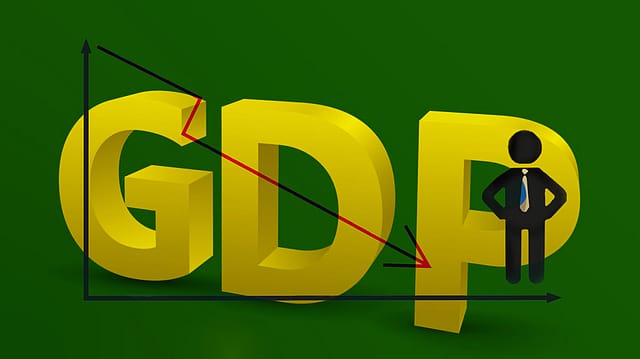Hindu rate of growth argument ‘ill-conceived, biased’: SBI on Raghuram Rajan's remarks
ADVERTISEMENT

Arguments like India’s growth is reminiscent of a pre-1980 Raj Krishna coined rate of growth are "ill-conceived, biased, and pre-mature" at best when weighing the recent GDP numbers against the available data on savings and investments, SBI's research wing said in its note.
Notably, late economist Raj Krishna in 1978 had coined India's rate of growth at 3.5-4% (Hindu rate of growth) for the period 1947-1980, in reference to low economic growth in the pre-liberalisation era.
"Quarterly growth numbers are noisy and should be best avoided for any serious interpretation (on an average, India’s GDP growth has witnessed Rs 2 lakh crores upward revision for the 3-year ended FY23), we find such argument ill-conceived, biased, and pre-mature at its best when weighing the recent GDP numbers against the available data on savings and investments," says Soumya Kanti Ghosh, group chief economic adviser, SBI Research.
The comments came a day after former RBI governor Raghuram Rajan, in an interview with a national news agency, said he is "worried" about the sequential slowdown in the country's economic growth, and that it is "dangerously close to our old Hindu rate of growth!"
December 2025
The annual Fortune 500 India list, the definitive compendium of corporate performance, is out. This year, the cumulative revenue of the Fortune 500 India companies has breached $2 trillion for the first time. Plus, find out which are the Best B-schools in India.
India’s economy grew 4.4% in the October-December quarter of the financial year 2022-23 after growing 6.3% in Q2 and 13.5% in the first quarter of FY23.
The further moderation in GDP is seen in the light of the Reserve Bank of India's (RBI) aggressive rate hike stance to contain high inflation levels. The slowdown in exports and low consumer demand also contributed to low GDP growth in the said quarter.
Ghosh says the investment and savings data for the past decade reveals interesting points, and that at the aggregate level, gross capital formation is supposed to have crossed 32% in 2022-23, the highest level since 2018-19.
"Gross capital formation (GCF) by the government touched a high of 11.8% in 2021-22, up from 10.7% in 2020-21. This also had a domino effect on private sector investment that jumped from 10% to 10.8% over the same period," the note said.
In 2021-22, gross savings have risen to 30% from 29% in 2020-21. The ratio is supposed to have crossed 31% in 2022-23, the highest since 2018-19, it said. Additionally, household savings increased sharply during the pandemic on sharp accretion in financial savings such as deposits.
Prima facie, a careful analysis shows the Incremental Capital Output ratio (ICOR), which measures the additional unit of capital (investment) needed to produce an additional unit of output, has been improving. It was 7.5 in FY12 and is now only 3.5 in FY22, said the note.
"Clearly, only half of the capital is now needed for the next unit of output...such reducing ICOR in the current years reflects a relatively increasing efficiency of capital. The talk on ICOR becomes relevant and shows that the economy is on a sound footing. "
In his recent interview, Raghuram Rajan said India must achieve growth in manufacturing, not through extravagant subsidies but by creating the right business environment, and easier access to inputs like land and labour.
